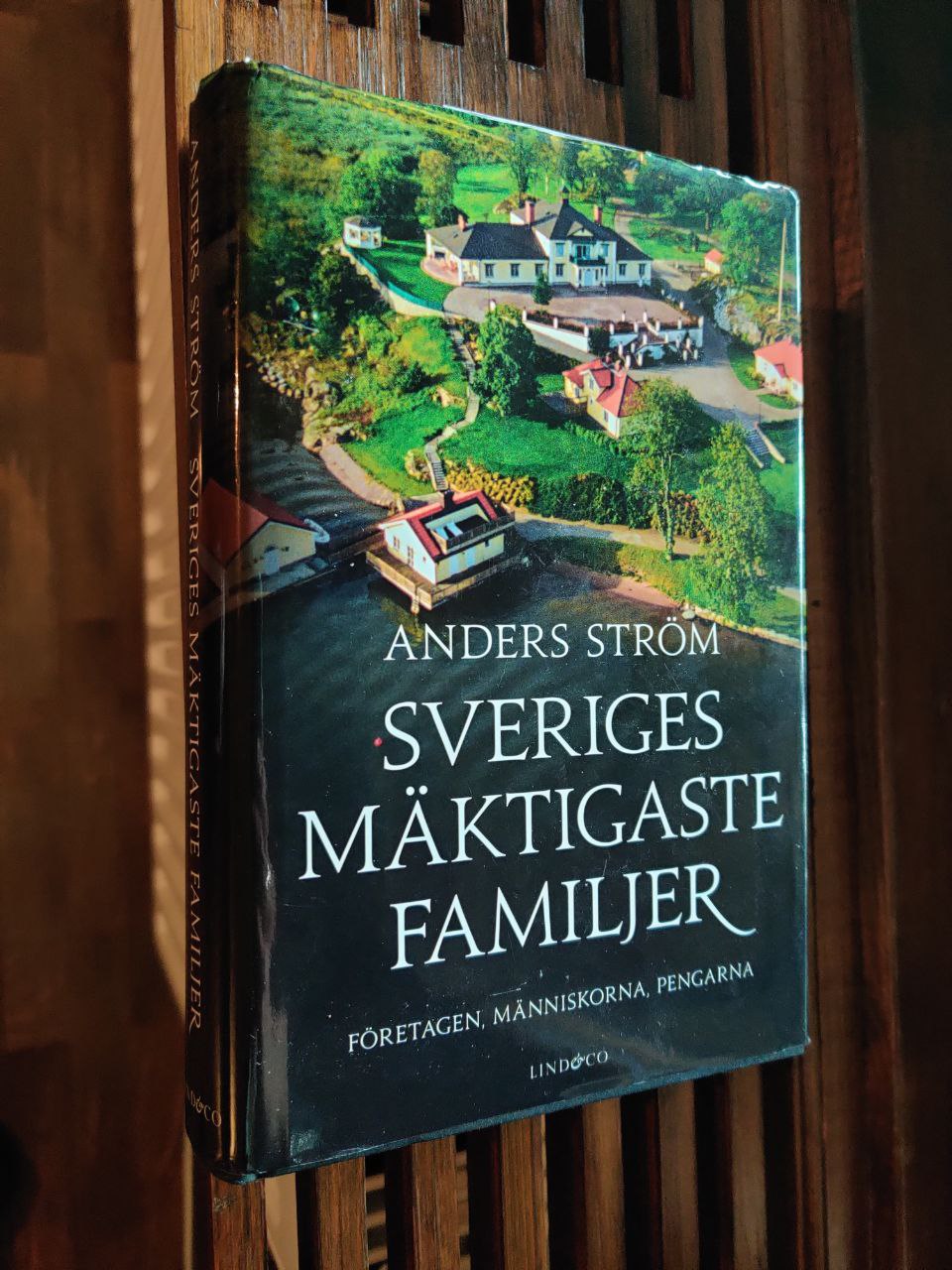Sveriges mäktigaste familjer: företagen, människorna, pengarna by Anders Ström

This book tells the story of the fifteen (currently) richest families of Sweden. The reason I read it is my relentless desire to integrate — that is, to understand the jokes that Swedish comedians make. Don’t want to be the person who doesn’t get the reference to the Walleberg money or Ax:son Johnson, no-no.
But I read it half a year ago, so the details are murky by now. I recognize the wealthy surnames though: Kamprad (Ikea), Rausing (Tetra Pak), Persson (H&M), Olsson (Stena), Lundberg (L E Lundbergföretagen), Ax:son Johnson (Axel Johnson koncern: Åhlens, Hemköp, Willy’s, Direkten, Dustin, Kicks, Martin&Servera, Mekonomen, SkinCity, etc), Schörling (Securitas, Assa Abloy), Paulsen (Ferring), Mærsk Uggla (A.P. Møller-Mærsk), Douglas (Latour), Hult (EF), Lundin (Lundin Petroleum), Bennet (Getinge), Stenbeck (Kinnevik), and of course Walleberg (who seem to own everything else). Bonnier family did not make the list since they’re like 90 people doing this and that by now, and apparently it was hard to add all of it up. Kinda sad actually, since they are the family owning almost all of the Swedish media.
The stories of the families almost never overlap, so it doesn’t matter in which order you read the chapters or if you read all of them. Within a single chapter, it also doesn’t matter that much if you skip a couple of pages — it’s often so repetitive that you probably won’t notice. So, a great book for a period in life when one does not get enough sleep and/or time to read and therefore can’t keep up with a story.
Since this is a book about family businesses, every chapter follows roughly the same structure: how did the company start, how did it succeed, how did the generation change(s) go for it, where does it pay taxes (spoiler alert: probably not in Sweden, or at least not all of them or not always). The author often points out how genius every businessman is, and how their vision is (invariably) long-term and sustainable. He praises the active ownership and owners made of flesh and blood, as opposed to an anonymous puddle of investors who don’t have any connection to the enterprise. It’s a pretty dry reading, even though attempts are made to inject a splash of personality here and there. But mostly you just learn whether a particular family is into being public figures or not (the majority isn’t). The success stories are usually pretty high-level so they fall short of being case studies. All in all, it’s fifteen chapters of trivia.
In terms of language, it is somewhat advanced due to the special vocabulary related to the companies in question (e.g. oil industry terms). But there’s no slang, no puns, and no highly complex sentences. Some chapters end with interviews, but those are so heavily edited that it barely differs from the rest of the text.
★★☆☆☆
(462 pages, ISBN:9789174618846, Worldcat, Open Library)
There is no comments section, but if you'd like to give feedback or ask questions about this post, please contact me.